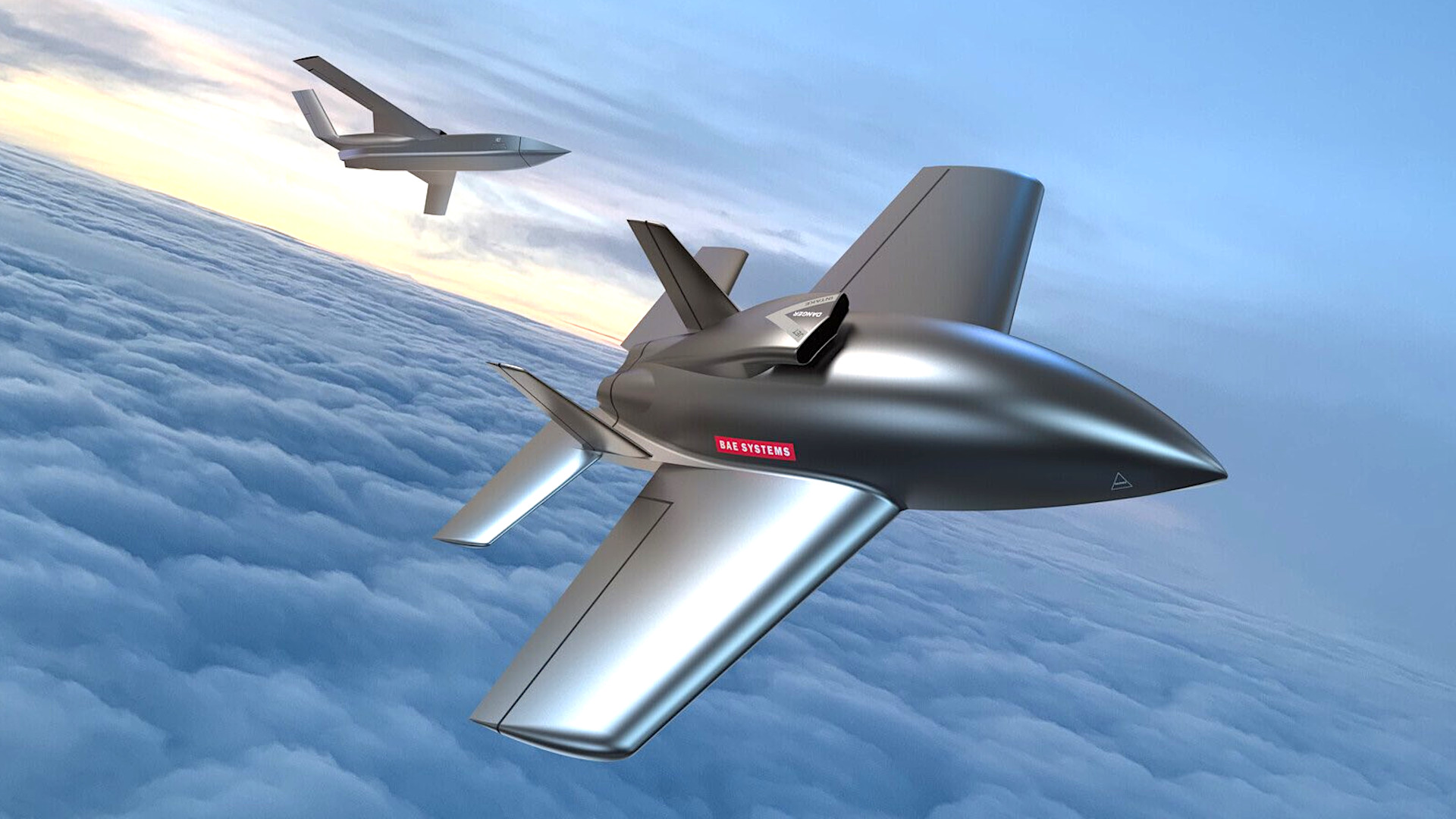British defense contractor BAE Systems has unveiled two new “agile and affordable” unmanned aircraft concepts to meet the demands of a “complex and rapidly evolving battlespace.” The public debut of these designs follows recent and very open discussions on the part of the U.K. Royal Air Force, including additional details announced just earlier this week, about its new and evolving plans to integrate drones into future operations.
The first of BAE’s newly revealed designs is a relatively small drone capable of operating either individually or as part of a networked swarm, while the second is larger and more in line with various lower-tier unmanned combat air vehicle concepts that other companies have put forward in recent years. Both are intended to be highly modular, allowing them to be configured for various mission sets, including reconnaissance, strike, and electronic warfare, as well as have varying degrees of autonomy.
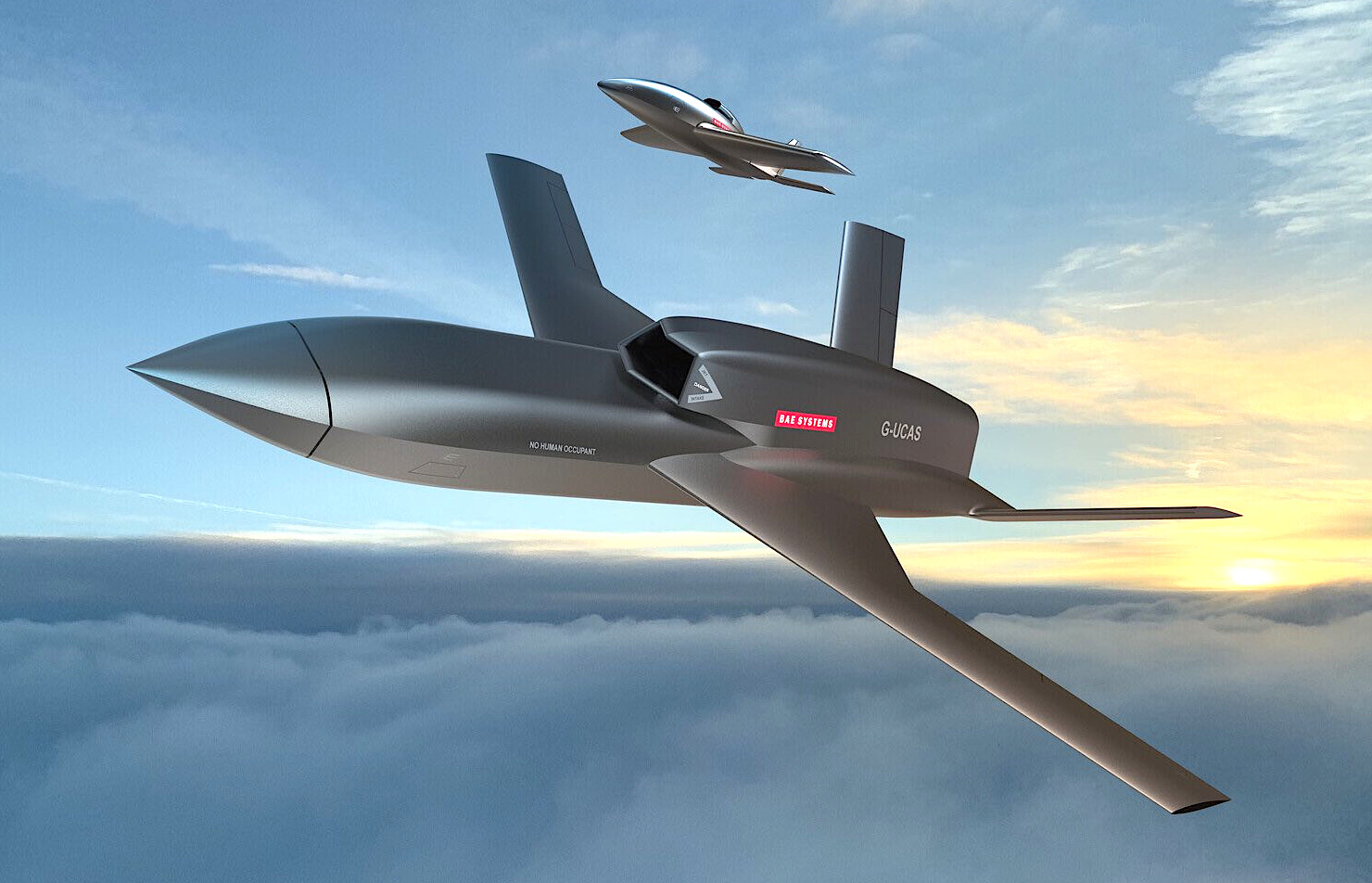
The two new unmanned designs from BAE made their public debut at this year’s Royal International Air Tattoo, or RIAT, a military air show held at the Royal Air Force’s (RAF) base at Fairford in the United Kingdom. Though RIAT is an annual event, the planned shows in 2020 and 2021 were canceled due to the COVID-19 pandemic.
“Autonomous systems play a key role in that connected, information-rich landscape. The development of agile and affordable new Unmanned Air System (UAS) concepts will provide critical enabling capability in these ever more contested environments,” BAE Systems’ website says. “UAS Concepts being developed within our Air sector offer the potential to enhance the operational effect of current and future crewed platforms, by augmenting the force mix through affordable combat power.”
The two new drone designs are currently unnamed.
What is presently known simply as “Concept 1” is “a small, versatile UAS designed to augment existing forces in the Attack and ISR [intelligence, surveillance, and reconnaissance] roles of Air Power,” according to a product card on BAE’s website, reproduced below. It is intended to be “expendable, but recoverable for multiple sorties.”
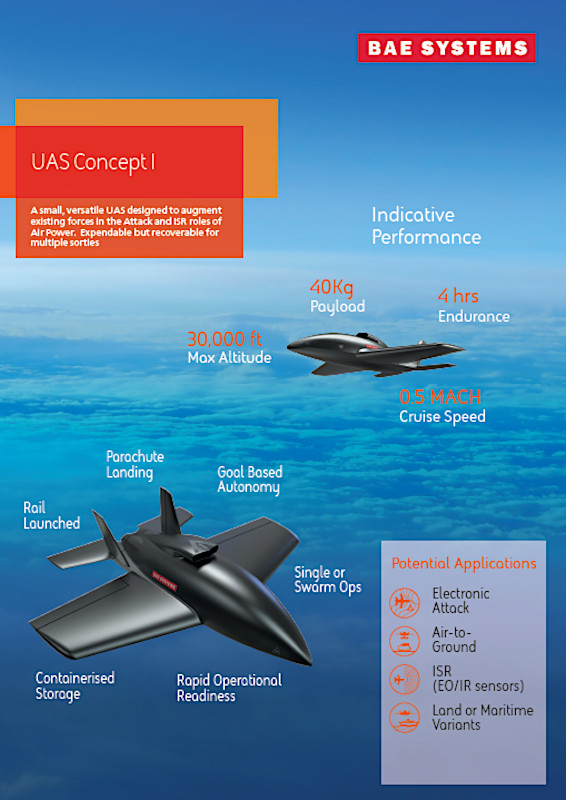
The first concept’s general design consists of a central fuselage with a bullet-like shape, two main wings with a very minor sweep, and twin vertical tails. It appears to be jet-powered, with an air intake positioned above the top rear portion of the fuselage.
BAE Systems says this drone will be capable of flying for up to four hours at altitudes up to 30,000 feet and at speeds of up to 0.5 Mach. It should be able to carry payloads weighing up to 40 kilograms (88 pounds), which could include electro-optical or infrared sensor packages, electronic warfare jammers, or unspecified munitions.
Concept 1 is runway independent, being launched from a rail-type catapult and then using a parachute recovery system to ‘land’ after a mission. It will be able to operate singularly or as part of a networked swarm, and will have what BAE calls “goal based autonomy,” the latter capability likely describing ability to carry out specific orders without further direct human interaction. From a logistical standpoint, Concept 1 is also intended to be rapidly deployable utilizing a containerized storage system.
“A medium-size UAS designed to substitute or augment existing forces in the Attack, ISR and Control of the Air Roles of Air Power,” is how a separate product card, seen below, describes Concept 2. It is a more robust design that is still intended to be “attritable, but designed for 100+ sorties.”
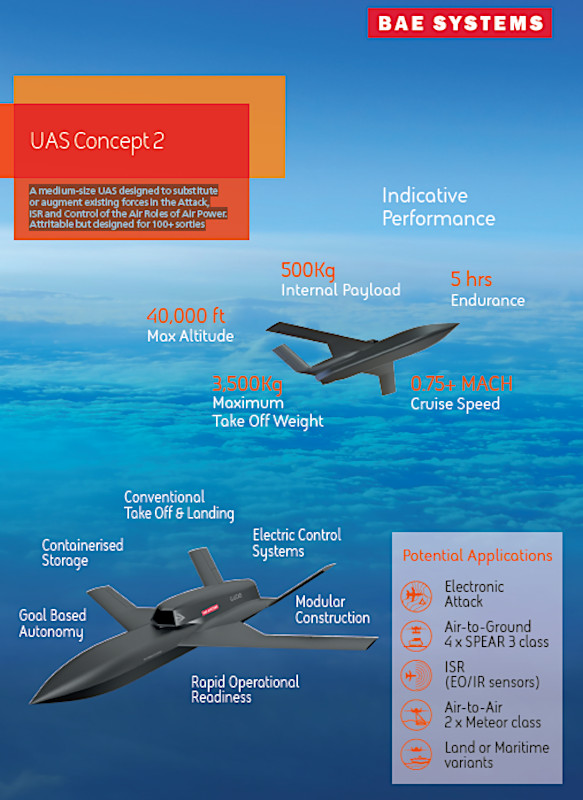
A broad definition of attritable when it comes to unmanned aircraft involves designs where costs have been balanced against cost targets to produce platforms that can perform a variety of missions, while also not being so expensive and complex that commanders might be unwilling to employ them in higher-risk environments.
The Concept 2 design has a longer, more slender main fuselage compared to Concept 1, along with ‘lambda’-like swept main wings and a splayed v-tail. This unmanned aircraft also looks to be jet powered with a very prominent top-mounted air intake and will take off and land like a traditional airplane. Outwardly at least, this concept has a number of similarities in broad strokes to other lower-end UCAV-like designs that other companies have been working on in recent years, including Lockheed Martin’s recently unveiled Tactical Expendable-Combat Air Vehicle (TE-CAV) and Kratos’ XQ-58A Valkyrie.
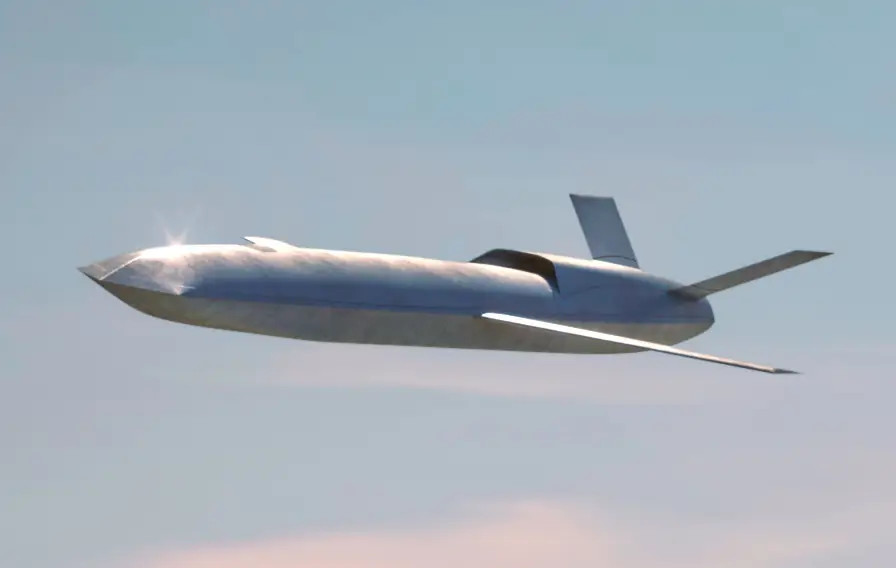
BAE Systems says the performance targets for the Concept 2 drone – which is shown in the rendering marked with the U.K. civil registration code G-UCAS and stenciling that reads “No Human Occupant” – include a five-hour endurance, the ability to fly up to an altitude of 40,000 feet, and reach a top speed of at least 0.75 Mach. With a maximum takeoff weight of 3,500 kilograms (7,716 pounds), it should be able to carry various payloads, including electro-optical or infrared sensors and electronic warfare suites, and will also feature “goal based autonomy.”
The product card for Concept 2 specifically mentions a possible air-to-air combat loadout consisting of two high-speed Meteor air-to-air missiles or an air-to-ground one with 12 SPEAR-3 mini cruise missiles on four triple launch racks. It’s unclear if the drone will be able to carry any of these munitions internally. Meteor and SPEAR-3 are both products of the European missile consortium MBDA, of which BAE Systems is a part.
BAE Systems says that Concept 2 will also be designed with an emphasis on rapid deployability, to include a containerized storage system.
How mature either of these designs might be currently is unknown, but BAE Systems has mockups of both on display at RIAT.
While BAE Systems does not appear to have said so yet specifically, it seems clear that the U.K. armed forces, specifically the RAF and the Royal Navy, are the main targeted customers for these concepts. Another product card on the company’s website that discusses “Future Challenges” and “Technological Opportunities” related to these drone designs, shown below, includes art showing them operating together with examples of the now-in-development Tempest sixth-generation stealth fighter, F-35 Joint Strike Fighters, other drones and cruise missiles, as well as various other assets on the ground, at sea, and in space. BAE Systems is the lead contractor behind the Tempest project.

That there is significant RAF and RN interest in acquiring various advanced unmanned platforms, including so-called ‘loyal wingman’ type drones intended to work with manned platforms and types able to operate in swarms, is well established at this point. In the context of BAE’s Concept 1 design, the RAF notably stood up a unit dedicated to experimenting with drone swarm concepts of operations, No. 216 Squadron, in 2020.
In the past three years, 216 Squadron, as well as the RAF’s Rapid Capabilities Office (RCO), have conducted 13 separate swarm experiments involving five different types of drones, Air Chief Marshall Sir Mike Wigston, the RAF’s Chief of the Air Staff, disclosed at the 2022 Global Air and Space Chiefs’ Conference in London just this week, according to Defense News. In 2020, Italian defense contractor Leonardo offered details about one such event, which saw a swarm of drones configured to carry out electronic warfare jamming missions scramble mock enemy radars, as you can read more about here.
“We are exploring new models of capability delivery and accelerated production ‘when we need them’ rather than ‘in case we need them,’ from the twin jet 3D-printed Pizookie, to commercially available large drones fitted with novel payloads, to large quadcopters,” Wigston explained at the Global Air and Space Chiefs’ Conferences week. No further details about the Pizookie drone appear to be readily available. British experiments have made it clear that drone swarms represent an “operationally useful and relevant capability,” the RAF Chief of the Air Staff added.
In terms of work on designs like BAE’s Concept 2, in June, the RAF did notably cancel a program, called Mosquito, which had been seeking to acquire flying prototypes of a broadly similar drone being developed by Spirit AeroSystems in Northern Ireland. Mosquito had been part of a larger RAF unmanned initiative known as the Lightweight Affordable Novel Combat Aircraft (LANCA) program.
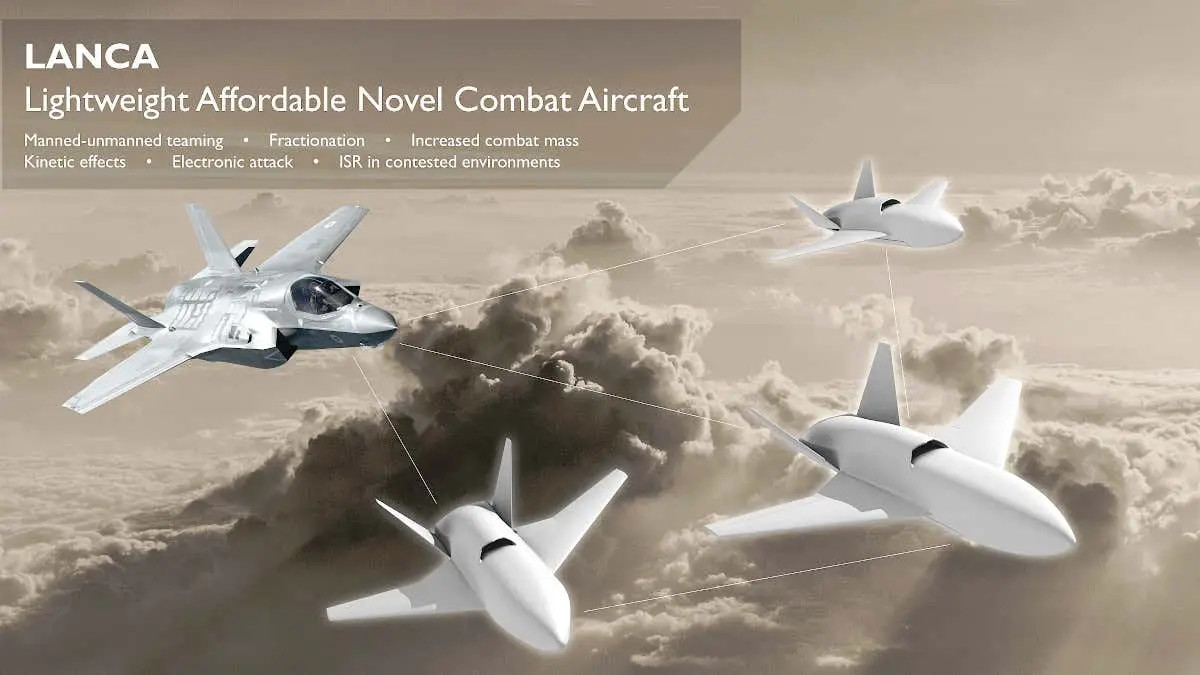
“Through Project Mosquito and other experimentation activities, the Royal Air Force has made substantial progress and gained significant value in understanding and harnessing a range of future uncrewed capabilities. This decision maximizes the learning accrued to date and enables a change of direction for the LANCA program,” Air Commodore Jez Holmes, Head of the RAF’s Rapid Capabilities Office, had said in a statement at the time of the cancellation. “The Rapid Capabilities Office will now quickly launch activities to aggressively pursue the RAF’s unchanged firm commitment to integrate advanced uncrewed capabilities into the near-term force mix with more immediate beneficial value.”
“The work has been challenging, but we have learned and gained a huge amount from our Mosquito program around digital design and novel manufacturing techniques. We’ve decided that our focus now should be on systems that can be operationalized much more quickly, and that is why we have drawn the Mosquito program to a close,” Air Chief Marshall Wigston also said at the Global Air and Space Chiefs’ Conference, according to Breaking Defense. “We are moving on fast and I’m delighted to announce that in the Autumn we’ll unveil a series of targeted challenge areas that we want to drive forward at pace, with industry, our science and technology partners, and internationally too.”
“So look out for our Rapid Capabilities Office who will launch a series of industry competitions to accelerate scalable uncrewed systems, culminating in an operational ‘fly-off’ to get those systems on the frontline, delivering for the warfighter faster and better,” he continued. “A mix of swarming drones and uncrewed combat aircraft, as well as next-generation piloted aircraft like Tempest,” is what the RAF is looking at now he added, describing exactly the two concepts BAE Systems has put forward today.
The Royal Navy is also looking into carrier-based drones of various types as part of Project Vixen. BAE’s product cards say that both Concept 1 and Concept 2 could include maritime, as well as land-based variants.

The U.K. armed forces and BAE Systems are hardly the only ones to be going down these paths. The unveiling of these two new drone concepts at RIAT comes just days after Lockheed Martin’s Skunk Works advanced projects division outlines its own multi-tier distributed manned-unmanned teaming vision, which also includes an expandable swarming component along with more robust UCAV-like designs. You can read more about this here.

With all this in mind, there is a possibility perhaps that elements of the British military, as well as the U.S. military, are among the unnamed “customers” that Skunk Works has said it has already been working with regarding its new distributed teaming concept.
Especially with the RAF pushing to move the LANCA program into the next phase, it is likely that continue to learn more about BAE Systems’ two new drone concepts and the company’s accompanying vision for how they might be employed operationally.
Contact the author: joe@thedrive.com
